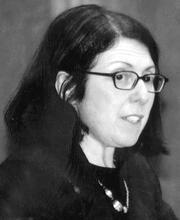Iphigene Ochs Sulzberger
Iphigene Ochs Sulzberger was the daughter of Adolph Ochs, who bought the New York Times in 1896 and built it from a struggling paper into a progressive touchstone. Sulzberger began volunteering at the Henry Street Settlement as a teenager and graduated from Barnard College in 1914. She married Arthur Sulzberger in 1917, the same year she became a director of the Times, and after he assumed control of the paper in 1935, she pushed him to include divergent political views. Meanwhile, she served as president of the Parks Association from 1934 to 1950 and chair from 1950 to1957. As a board member of Barnard College from 1937 to1968, she raised over $2 million for their library. For over a decade, she was the single largest contributor to the United Negro College Fund. In 1981 she published her memoir, Iphigene.
Early Life and Family
Iphigene Ochs Sulzberger was the daughter, wife, mother, and grandmother of four publishers of the New York Times.
Born on September 19, 1892, to second-generation German Jewish immigrants in Chattanooga, Tennessee, she was the granddaughter of the renowned Reform rabbi Isaac Mayer Wise. She moved to New York City when her father, Adolph Ochs, purchased the New York Times in 1896. Her childhood in New York was spent in the company of New York power brokers and cultural leaders. Sundays were often spent visiting the Carnegies or the Schiffs, or walking with her father in Central Park. She writes in her memoirs that “The city’s cultural institutions were my classroom.” After being educated at private schools, including the exclusive Benjamin Dean School, she entered Barnard College in 1910. She performed well in college and graduated in 1914 with majors in economics and history. She attributed her commitment to social causes in part to her Barnard education, and volunteered weekly at the famous Henry Street Settlement throughout college.
The Times and Civic Service
She married Arthur Sulzberger, a cotton merchant, in 1917. She had met Sulzberger briefly while he attended Columbia University, but their relationship blossomed while he was in the armed forces. After they married, Iphigene Sulzberger focused on building a family. Her four children were all born between 1918 and 1926. The youngest, Arthur, would eventually succeed his father as editor of the New York Times. As her family grew, she shifted her focus from the home to civic and philanthropic causes. She became president of the Parks Association in 1934, and served until 1950, when she began serving as chairperson, in which capacity she remained until 1957.
Sulzberger became a trustee of the Times upon her father’s death in 1935. At this time, her husband became publisher of the newspaper. She avoided using her personal influence to affect editorial positions within the paper, although she claimed in her memoirs to have suggested and encouraged many stories with social justice and community service themes. Her civic activities revolved around educational institutions. She served on the board of Barnard College from 1937 to 1968, and raised funds for the construction of a library. She also served as a trustee of the Hebrew Union College–Jewish Institute of Religion, which awarded her an honorary doctorate of humane letters in 1973. She served as a trustee for the University of Chattanooga as well. Not limiting herself to universities, she sat on the board of the Cedar Knolls School for Girls, where she had once worked.
Legacy
Sulzberger won numerous awards for her public service, and received several honorary degrees. In 1951, Columbia University granted her a doctor of laws degree. In 1978, she received an honorary doctorate of humanities from Bishop College in Dallas, which noted that she had been the largest single contributor to the United Negro College Fund over the previous decade. The Jewish Theological Seminary awarded her an honorary doctorate of letters in 1968.
Her family continued to shape the Times for the rest of the century. Her son-in-law, Orvil Dryfoos, became editor upon her husband’s retirement in 1961. After Dryfoos died in 1963, Arthur Ochs Sulzberger succeeded him as publisher. His son, Arthur Hays Sulzberger, became publisher in 1992. Iphigene Sulzberger’s memoirs, Iphigene, were published in 1981. They provide an amusing and insightful look at the Times’s history, and many of the famous figures of the twentieth century.
Iphigene Sulzberger died in her sleep at age ninety-seven on February 26, 1990.
Obituary. NYTimes, February 27, 1990.
Sulzberger, Iphigene Ochs. Iphigene: The Memoirs of Iphigene Ochs Sulzberger, as told to Susan W. Dryfoos (1981, 1987).
WWIAJ (1938).


![roisman.jpg - still image [media] roisman.jpg - still image [media]](http://cdn.jwa.org/sites/default/files/styles/medium/public/mediaobjects/roisman.jpg?itok=7iKIF0ev)





